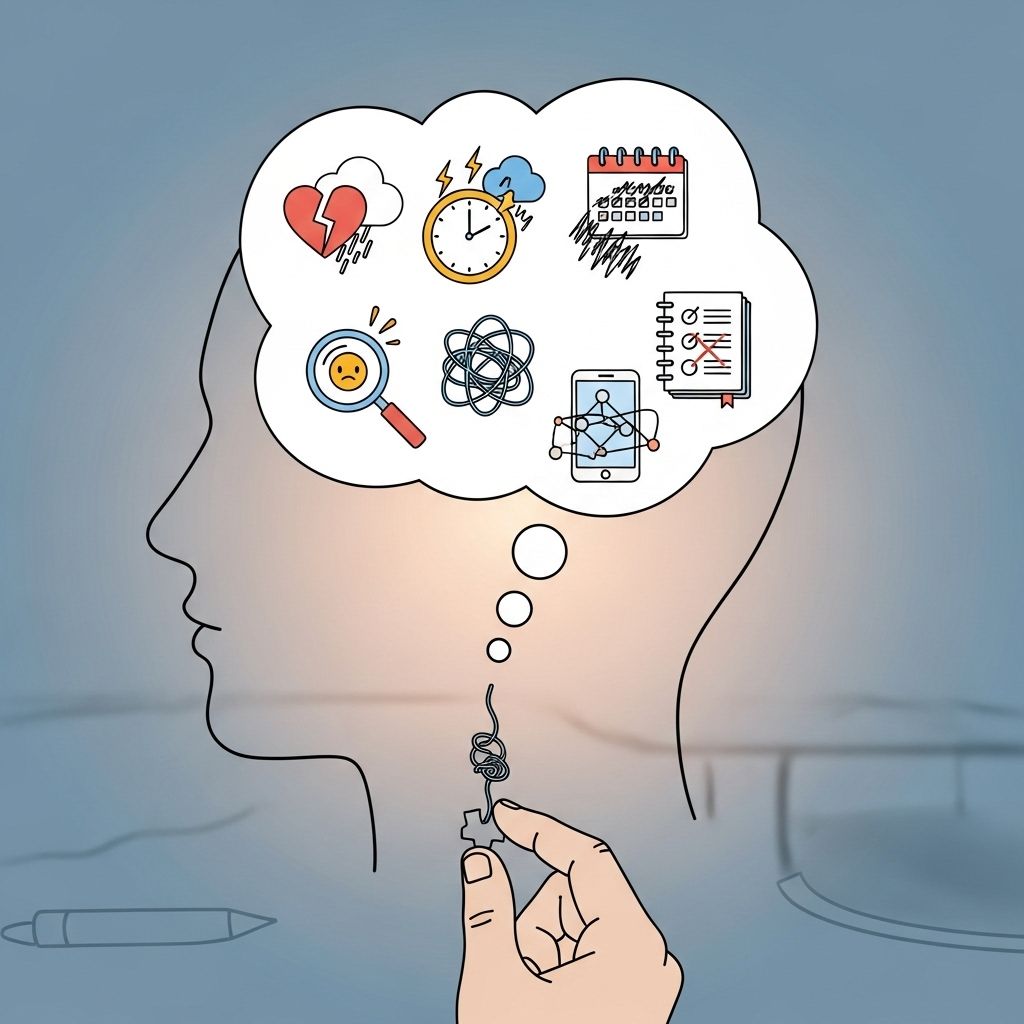5 Common Mood Tracking Mistakes to Avoid
Gain deeper self-awareness by refining how and when you log your daily emotions.

Introduction to Mood Tracking
Mood tracking is a powerful tool for understanding emotional patterns, gaining self-awareness, and making informed decisions about mental health. However, many people face challenges when implementing mood tracking effectively. Common mistakes can lead to misleading conclusions or frustration, undermining the benefits of this practice. Here are five common mistakes to avoid when tracking your mood:
Mistake #1: Inconsistent Tracking
One of the biggest mistakes is tracking moods inconsistently. Many people only log their emotions when they feel extremely happy or deeply upset, skipping more neutral or routine days. This creates a distorted picture of emotional patterns, making it seem like life is just a series of highs and lows, when in reality, most days fall somewhere in between.
To build a consistent habit:
- Set Reminders: Use notifications or link mood tracking to an existing habit, like journaling before bed.
- Make It Quick and Simple: Use a system that allows for fast, easy entries.
- Don’t Worry About Perfection: A simple note or rating is enough to maintain consistency.
Mistake #2: Using Vague or Inconsistent Labels
Another common mistake is using vague or inconsistent labels to describe emotions. Writing down just “good” or “bad” may seem convenient, but these broad terms don’t provide much insight into how you’re actually feeling. Similarly, changing how you label your emotions over time can make it harder to spot patterns in your mood.
To avoid this:
- Use Precise Labels: Choose specific words like “overwhelmed,” “frustrated,” or “exhausted” to describe your emotions.
- Be Consistent: Use the same labels over time to accurately track emotional trends.
Mistake #3: Over-Monitoring or Obsessing
Some individuals might over-monitor their mood, leading to excessive self-analysis or preoccupation with minor emotional changes. This can be particularly problematic for those with anxiety or obsessive tendencies. Therapists should encourage clients to view mood tracking as a tool for self-awareness rather than perfectionism.
To avoid over-monitoring:
- Set Boundaries: Limit how often you check your mood charts.
- Focus on Patterns: Look for recurring themes rather than individual entries.
Mistake #4: Not Reviewing and Reflecting on Data
Tracking your mood is valuable, but simply recording emotions without reviewing them later limits its usefulness. Many people log their moods consistently but never reflect on their data, missing out on important insights.
To effectively review your mood data:
- Set Aside Time for Reflection: Make it a habit to review your mood data weekly or monthly.
- Look for Patterns: Identify recurring themes or triggers that affect your mood.
- Take Action: Use your insights to make adjustments, such as prioritizing activities that boost your mood.
Mistake #5: Not Adding Context
Lastly, not adding context to mood entries can make it difficult to understand why you feel a certain way. Including external factors like weather, social interactions, or lack of sleep can help identify triggers.
To add context effectively:
- Record External Factors: Note any events or circumstances that might influence your mood.
- Analyze Trends: Use this context to identify patterns and triggers.
Frequently Asked Questions (FAQs)
Q: Why is consistency important in mood tracking?
Consistency helps capture the full range of emotions, providing a more accurate picture of your mental state over time and allowing you to identify patterns and triggers more effectively.
Q: How can I avoid over-monitoring my mood?
To avoid over-monitoring, focus on larger trends rather than individual entries, and set boundaries on how often you check your mood charts. Emphasize self-awareness over perfectionism.
Q: What are the benefits of regularly reviewing mood data?
Regularly reviewing your mood data helps you identify patterns, triggers, and long-term trends, which can inform self-care decisions and improve mental well-being.
Conclusion
By avoiding these common mistakes, you can enhance your mood tracking experience and gain deeper insights into your emotional patterns. Remember, mood tracking is a tool for growth and self-awareness, not a source of stress or judgment.
References
- https://moodset.life/blog/posts/mood-tracking-common-mistakes/
- https://www.blueprint.ai/blog/mood-charts-in-therapy-a-practical-tool-for-emotional-awareness-tracking-and-insight
- https://www.calm.com/blog/mood-monitoring
- https://www.talktoangel.com/blog/how-mood-tracking-can-help-in-identifying-emotional-triggers
- https://pmc.ncbi.nlm.nih.gov/articles/PMC8387890/
- https://mindvibe.com/blog/are-you-making-these-7-huge-mistakes-with-depression-treatment/
- https://lbpost.com/brand-stories/mood-tracking-101-journaling-and-how-to-get-started/
- https://www.healthline.com/health/how-to-keep-mood-journal
- https://depressionwarrior.com/2020/12/01/how-and-why-to-track-your-moods/
- https://www.betterhealth.vic.gov.au/health/healthyliving/monitoring-your-mood
Read full bio of medha deb












